Published Jan 27th, 1/27/24 11:39 am
- 5,504 views, 50 today
- 1,208 downloads, 9 today
2,432
The long-awaited Greenfield International Airport is a key work of the Greenfield Minecraft project. Built with the help of actual airport ramp workers, architects, and many an attuned aviation geek, it may well be the most realistic fictional airport created in, or out of, Minecraft. Accurate runway and taxiway signage and lighting, correctly modeled baggage systems, and fully detailed and furnished buildings from passenger and cargo terminals to air traffic control to airport vehicle maintenance facilities all make up this monumental project that took over 3 years of planning and 2.5 years of construction.
The Planning Process
The airport plan was initially released to Admins back in mid-2019 as an extremely rough sketch from THEJESTR (Oskar). This plan was to merely show us where the airport would need to be located in the grand scheme of the map. The exact drawings and details of the airport would be developed in the many months we had leading up to the start of the construction of the airport. Below is the first image of the airport placement.
The Very First Airport Planning Image
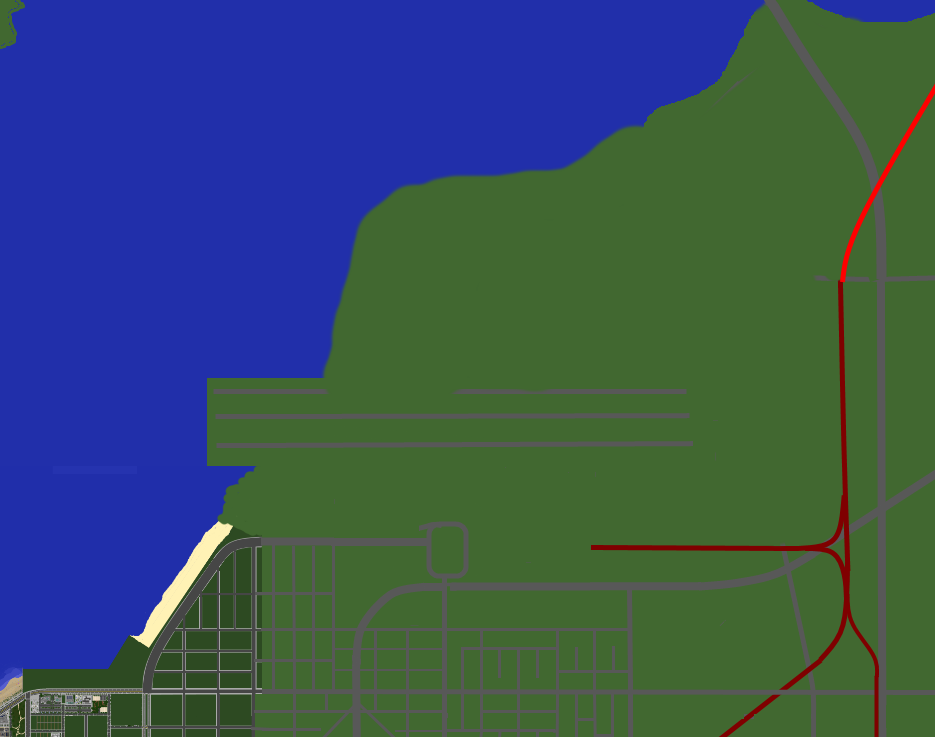
While this was a very rough sketch, it was a good basis for us to work off of to begin working on new, more detailed, plans. From this point, we had nearly a year until we would even consider beginning the airport building process. Not long after Oskar sent the first image, our admin, 56515 (Marty), drew up the first official airport plan, seen below.
The First High-Fidelity Drawing
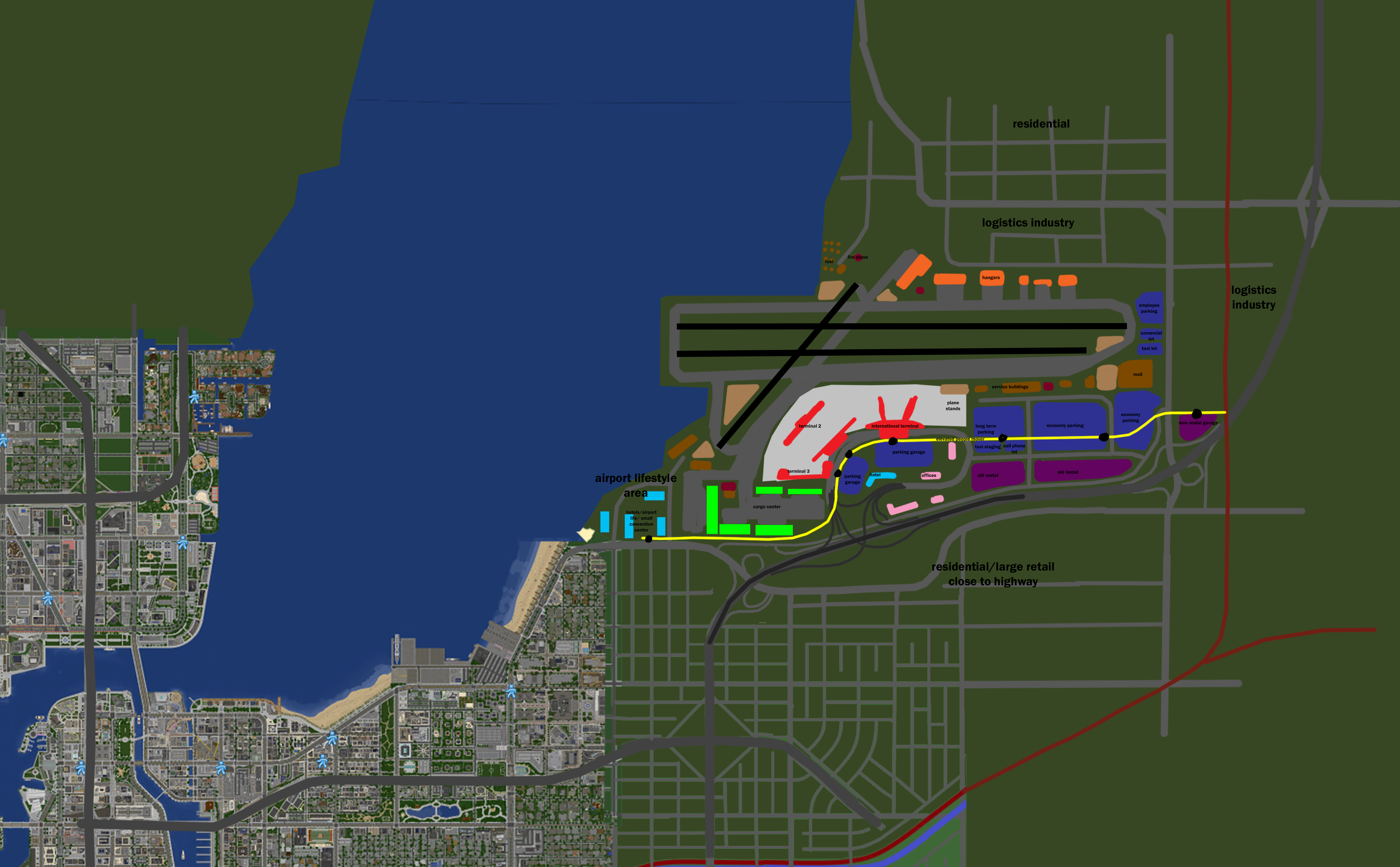
The plan above was produced mainly by Marty after lots of discussion with the rest of the admin team at the time. Plans from this point forward mainly focused on tweaking this concept image. Next on our plate was to work in infrastructure, which took a couple of different iterations to get correct. Below, we can see how the interstate system changed throughout the development lifecycle of the airport.
A Couple of Infrastructure Iterations
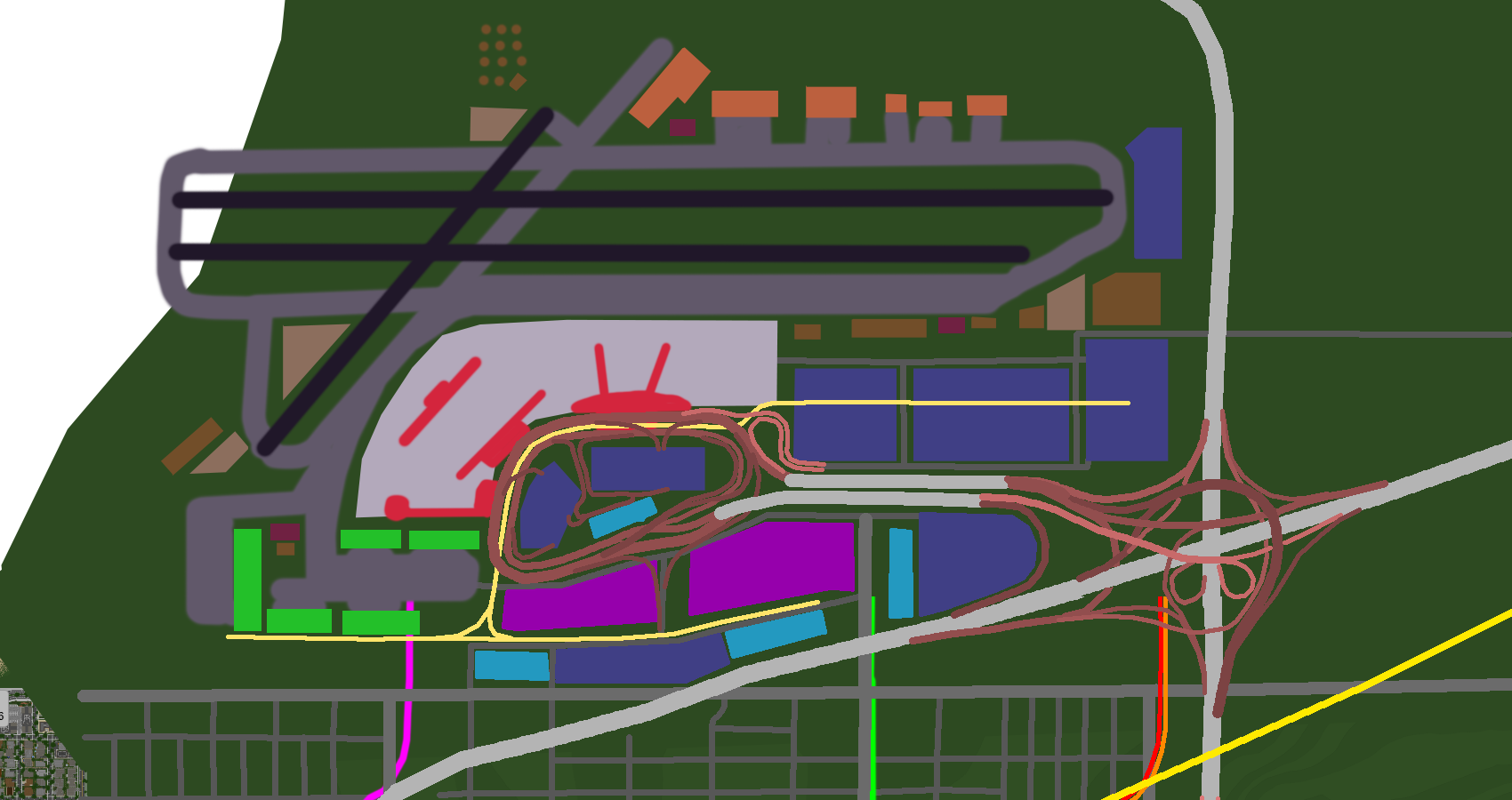 The first iteration, above.
The first iteration, above.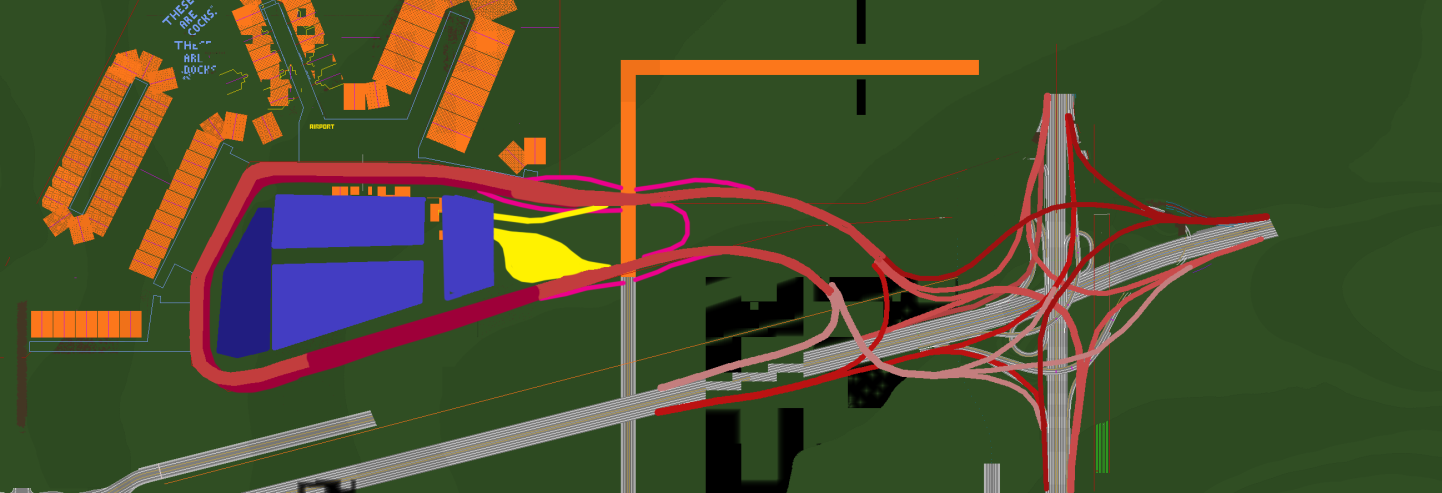
The second iteration, above
After the interstate connections were made, the last few large-scale plans revolved around developing the taxiways, runways, and tarmac regions. Below is the initial sketch of the taxiways and runways, which mostly went unchanged from its initial sketch.
Our Taxiway Sketched Layout

One of the final large-scale changes to the airport was the north tarmac region. Our initial sketches included very little space for aircraft maintenance and just general aircraft parking. Our last major design change of the airport was guided towards fixing that. Below is the sketch of what we planned for the north tarmac to handle our new spacing, maintenance, and size requirements.
The New North Tarmac

In the many planning documents for the airport, you can see the evolution of the plans over time as more and more of it was constructed. The breadth of this project is immense. Not only would the aviation and logistics aspects need to be reliably accurate, but all the associated connecting features like the highways, airport hotels, convention halls, and even a rental car/intermodal transit structure needed to be portrayed properly. Realism was taken into account at every stage, from the way the runways would be oriented on this part of the Californian coast to what kinds of services each of the terminals would provide. Individuals with experience working in real airport facilities were invaluable in verifying the accuracy of our planning, and detailing the reproduced infrastructure.
Approach to Realism
Inspiration from the real world was, of course, a necessity, but this was balanced with the uniqueness of our airport. The overall layout, and later detailing, were primarily inspired by San Francisco International and Los Angeles International. The shape of the three passenger terminals is inspired by different eras of airport architecture, from the late 70s to the early 2010s, while all being distinct from any real-life counterparts.
The most nearly reproduced structures at the airport have to do with the automated people mover, which is very similar to the one operated at Chicago's O'Hare airport; the rail maintenance facility and the terminus intermodal hub are very similar to the ones made for that system as well.
Also analogous to real life is the Skyliners hangar, modeled directly off of the American Airlines hangar, which itself has been replicated at many real-life airports. In-game, you can find the huge fire suppression system and elevated repair bay.
Water runoff is a huge concern for real airports, so a plan was also made to determine how runoff from our airport's limitless impervious surfaces would make its way into the marshlands to the north to be naturally filtered into the Greenfield bay.
Approach to Details
One of the most time-consuming details was getting accurate runway and taxiway signage, markings, and even damage. Real runway numbers are based on their magnetic heading, and this was an easy detail to add. The taxiway IDs would be more difficult.

The planning document above was created in the style of a real FAA-approved airport diagram to organize how the taxiways would be assigned letters and numbers. This was then used to create, in the end, hundreds of unique heads with front and back letterings that would be placed on invisible armor stands to make very realistic taxiway signs on the ground.
For the damage from planes landing over time shown on the runways, long images of real runways were screenshotted from Google Maps, and were converted using a tool into Minecraft blocks on a certain gradient, and then carefully masked below the runway markings in-game. The damage shown on runway 3-21, for instance, is that of Indianapolis International's runway 14-32. For the taxiways, damage from heavy nosewheels was produced more manually. At sharper turns, for instance, damage was shown to be thicker and darker. Less used taxiways, and taxiways used by lighter planes like general aviation aircraft, were dealt much less damage.
Additional Images
I couldn't fit these into the above reel, but we liked them so much that we still wanted to show them.

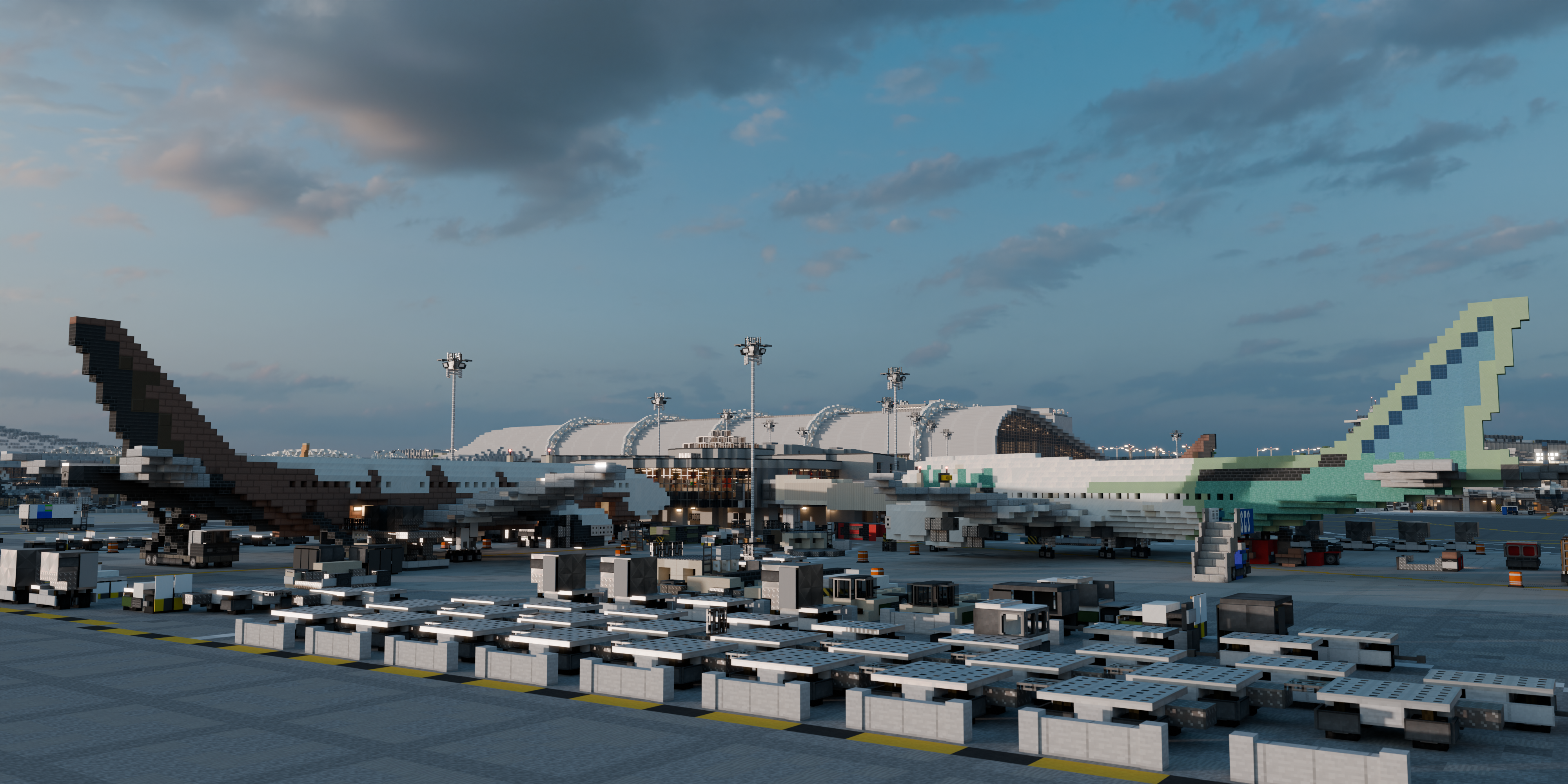


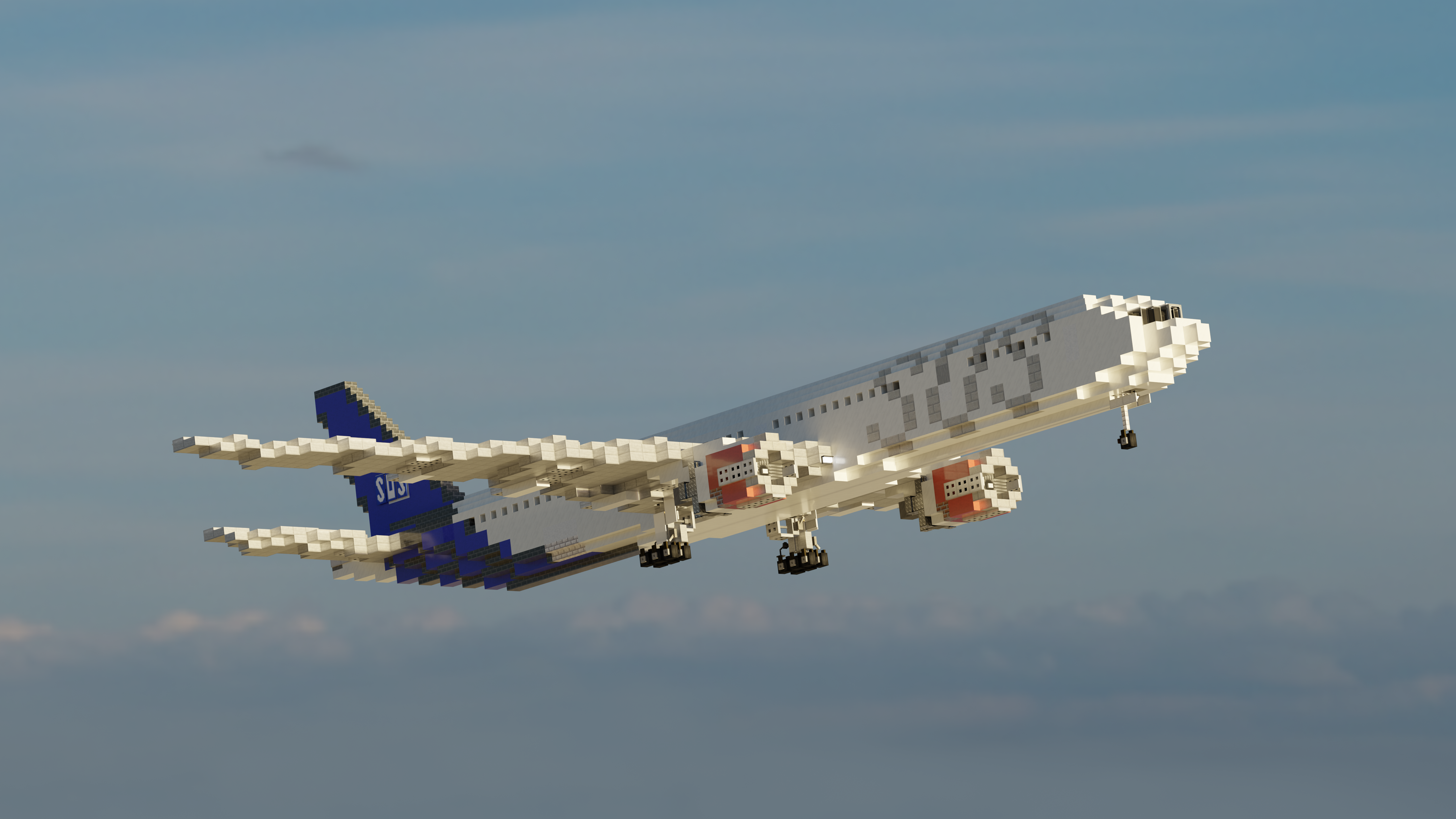
Closing Notes
We hope you enjoy our airport. It was the most complex, time-consuming, and impressive thing we have ever worked on in Minecraft, barring the Greenfield project as a whole. Check out the archived dynmap of the update that initially contained the airport at https://v054.greenfieldmc.net/
If you want to join this excellent build team to work by our side with these megaprojects, consider joining our build team by applying at https://apply.greenfieldmc.net.

| Credit | Our Excellent Build Team |
| Progress | 100% complete |
| Tags |
tools/tracking
2066960
2
the-greenfield-international-airport-gia





































![Pompeiian Villa - Villa of Publius Fannius Synistor [Work in Progress] Minecraft Map & Project](https://static.planetminecraft.com/files/image/minecraft/project/2024/759/17738622-default_s.jpg)

![Harbor Container crane [Large] Minecraft Map & Project](https://static.planetminecraft.com/files/image/minecraft/project/2024/202/17740476-image_s.jpg)
Create an account or sign in to comment.